Introduction
In a rapidly evolving business landscape, the quest for operational efficiency and productivity is more critical than ever. Robotic Process Automation (RPA) emerges as a transformative solution, enabling organizations to overcome labor shortages, reduce costs, and enhance accuracy. By automating repetitive and mundane tasks, RPA liberates human talent for more strategic and value-added activities.
This article delves into the multifaceted benefits of RPA, illustrating how businesses can leverage this technology to drive growth, optimize resources, and improve decision-making. Real-world examples underscore the practical applications of RPA, showcasing its potential to revolutionize workflows and create a more dynamic and competitive business environment.
Enhanced Productivity
Robotic Process Automation (RPA) has the ability to enhance productivity by managing repetitive duties, allowing employees to concentrate on strategic activities that contribute more value. For instance, RPA can automate data entry, extraction, and document processing, which are traditionally time-consuming and prone to human error. This shift not only enhances accuracy but also reduces the need for overtime or temporary staff during peak periods, as RPA systems can operate 24/7.
The advantages of RPA reach further than simple task execution. By investing in the right tools and upskilling the workforce to complement these systems, companies can create a more harmonious and efficient work environment. Case in point: St. James Winery in Missouri adopted mechanization to address labor shortages and has since experienced higher margins and enhanced operational outcomes.
Furthermore, incorporating RPA within an organization is part of a larger strategy referred to as Hyperautomation, which views the implementation of technological advancements as an ongoing process of enhancement. This approach is crucial for maintaining competitiveness and optimizing processes.
Statistics indicate that mechanization can significantly enhance employee health and safety. For example, each standard deviation increase in the use of robots reduces workplace injuries by about 16% in the U.S. and decreases physical work intensity by 4% in Germany. This results in healthier work environments and higher job satisfaction.
Ultimately, RPA and broader mechanization strategies are not just about technology; they represent a strategic imperative for modern enterprises aiming to unlock their full potential and drive sustainable growth.
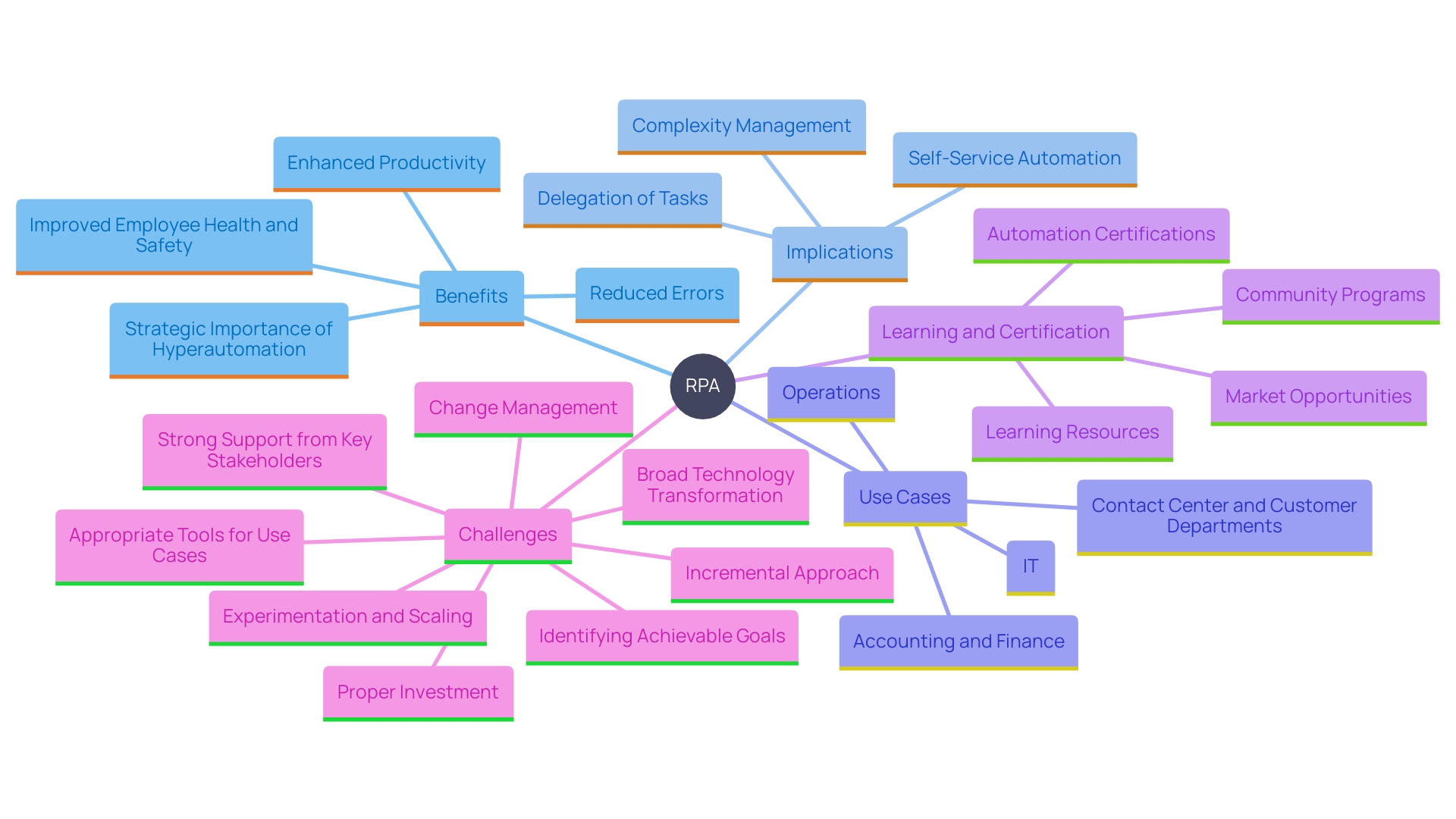
Increased Efficiency and Reduced Costs
By streamlining operational processes through Robotic Process Automation (RPA), businesses can significantly reduce the time required to complete tasks. This enhanced efficiency not only lowers operational costs but also allows companies to reallocate resources to more strategic activities. For instance, St. James Winery, a prominent wine manufacturer in the U.S., adopted technology to manage growth and labor shortages, leading to higher margins and more efficient operations. Similarly, Europris, Norway’s leading discount chain, consolidated six warehouses into one automated logistics center, drastically improving their operational efficiency. According to Allied Market Research, the Robot Operating Systems Market is expected to grow at a CAGR of 12.9% from 2023 to 2032, reaching $1.8 billion, underscoring the increasing adoption of automation technologies. Moreover, RPA works 24/7, eliminating the need for overtime pay or temporary staff during peak seasons, which further contributes to cost savings. As one specialist observes, ‘RPA software can carry out repetitive activities at a significantly quicker speed than humans, without the requirement for pauses or rest,’ enabling employees to concentrate on more value-added responsibilities.

Improved Accuracy and Reduced Errors
RPA reduces human mistakes by carrying out activities with unmatched accuracy and reliability. This improvement in accuracy not only enhances the quality of work but also significantly reduces the risk of costly mistakes, ensuring a higher standard of output. For instance, a study at California State University revealed that utilizing tools like Postman has streamlined their processes, reducing API testing times from two weeks to just one day. This leap in efficiency underscores how RPA can eliminate repetitive steps and adjust variables seamlessly, a benefit that translates into higher productivity and collaboration within large organizations. Additionally, RPA’s ability to operate 24/7 without error drastically cuts labor costs and eliminates the need for overtime pay, as highlighted in various industry reports. By utilizing such technology, companies can concentrate on more value-enhancing activities, promoting overall business growth and efficiency.

Scalability and Flexibility
RPA solutions offer exceptional scalability, enabling businesses to adjust operations swiftly in response to fluctuating market conditions or operational demands. This adaptability is invaluable, as it allows organizations to handle increased workloads or scale down during quieter periods without substantial financial outlay. For instance, St. James Winery, faced with rapid growth and labor shortages, introduced mechanization to enhance production speeds and profit margins. Similarly, Amazon’s integration of over 750,000 robots has revolutionized its operations, improving efficiency and creating new job categories despite reducing the overall workforce. This trend underscores how RPA can seamlessly integrate with existing systems, automate routine tasks, and maintain high accuracy, all while providing businesses the agility needed to stay competitive in dynamic environments.
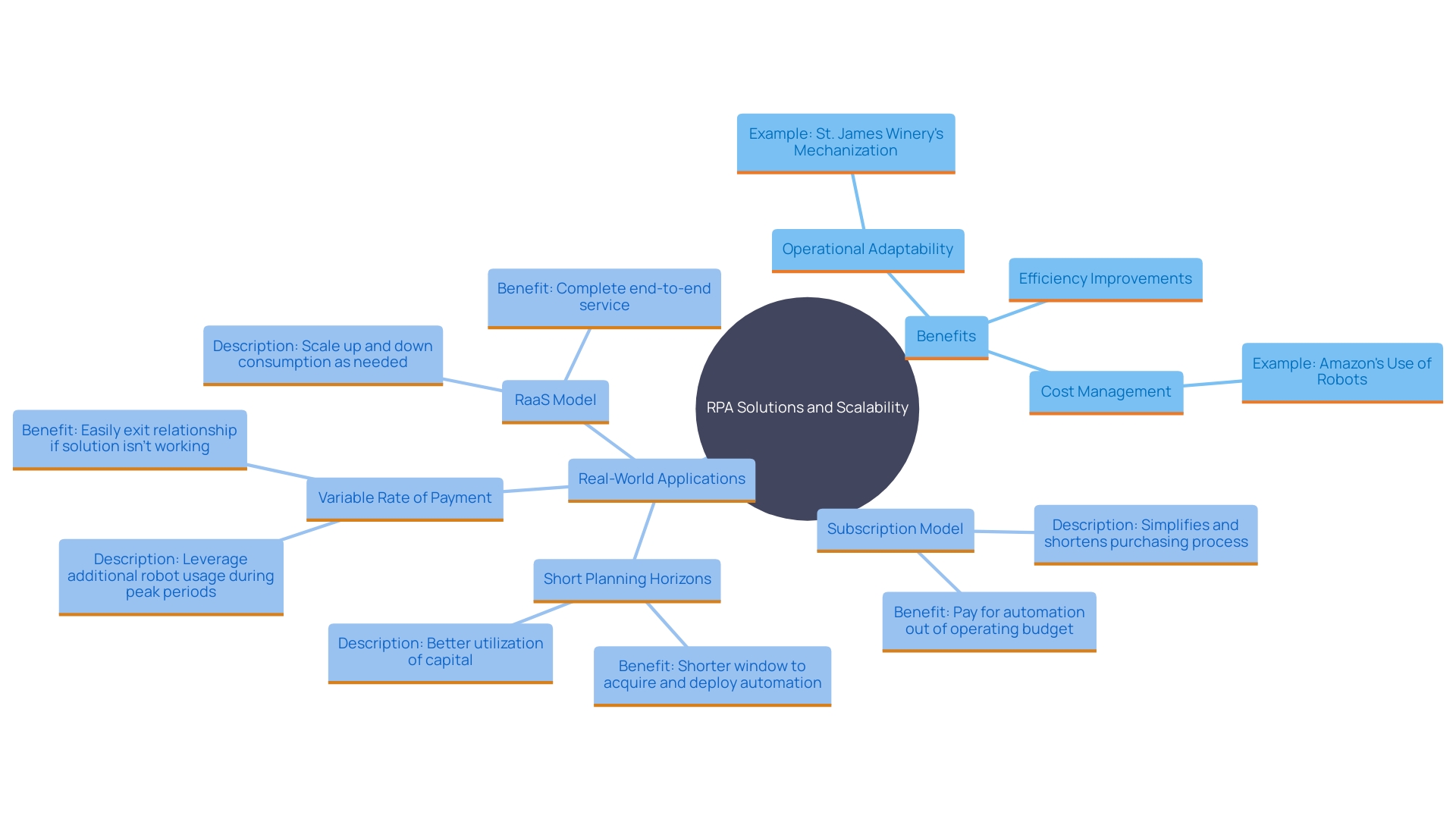
Better Customer Experience
By automating customer service processes such as inquiries and order processing, RPA dramatically improves the overall customer experience. For instance, St. James Winery, a prominent wine maker in the U.S., has experienced substantial advantages from mechanization, including higher margins and increased production speeds. Similarly, companies that implement RPA experience faster response times, which directly contribute to higher customer satisfaction and loyalty. Statistics reveal that 80% of customers believe that a company’s experience is as important as its products or services, and 45% of consumers expect their issues to be resolved in the first interaction. Additionally, modern customers demand quick responses, with 46% wanting companies to reply to their queries within four hours. By adopting mechanization, businesses can meet these expectations, ensuring consistent and exceptional service that keeps customers returning.
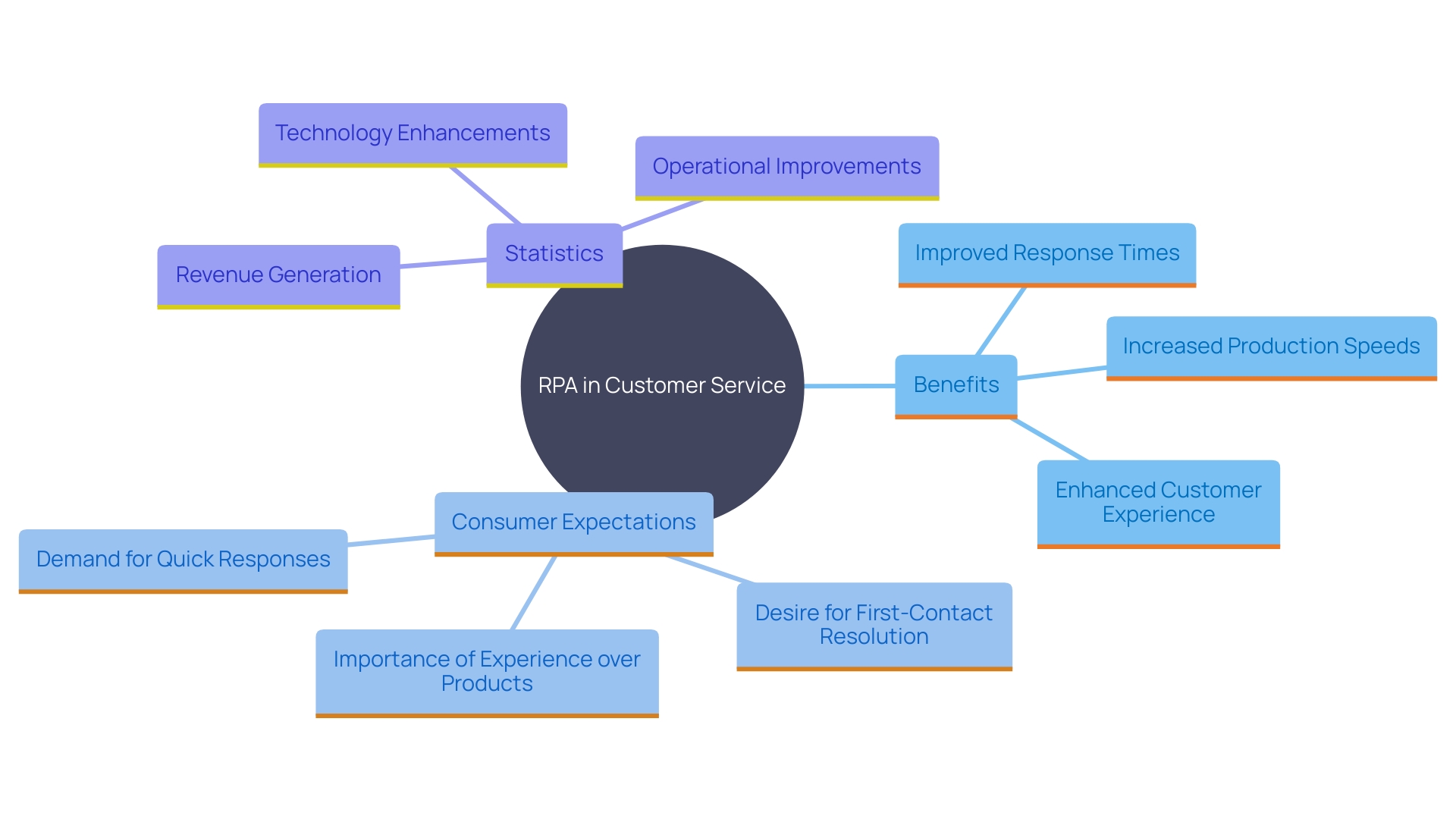
Improved Decision-Making with Enhanced Data Insights
RPA tools excel in gathering and analyzing data, transforming it into actionable insights that drive strategic planning and decision-making. These capabilities significantly enhance overall business performance by enabling organizations to maximize resource utilization and improve system operations. For instance, in the healthcare industry, 93% of hospitals have adopted process automation, highlighting its critical role in workflow optimization. By automating routine activities such as data entry and transaction processing, RPA not only frees up valuable human resources for more strategic endeavors but also enhances efficiency and effectiveness. As Eric Jang, VP of AI at 1X Technologies, explains, ‘RPA can predict how the world changes in response to a robot’s actions,’ underscoring the importance of advanced data analysis in bridging gaps between simulated and real-world environments. This robust data capability empowers organizations to make informed decisions, ultimately driving their productivity and growth.
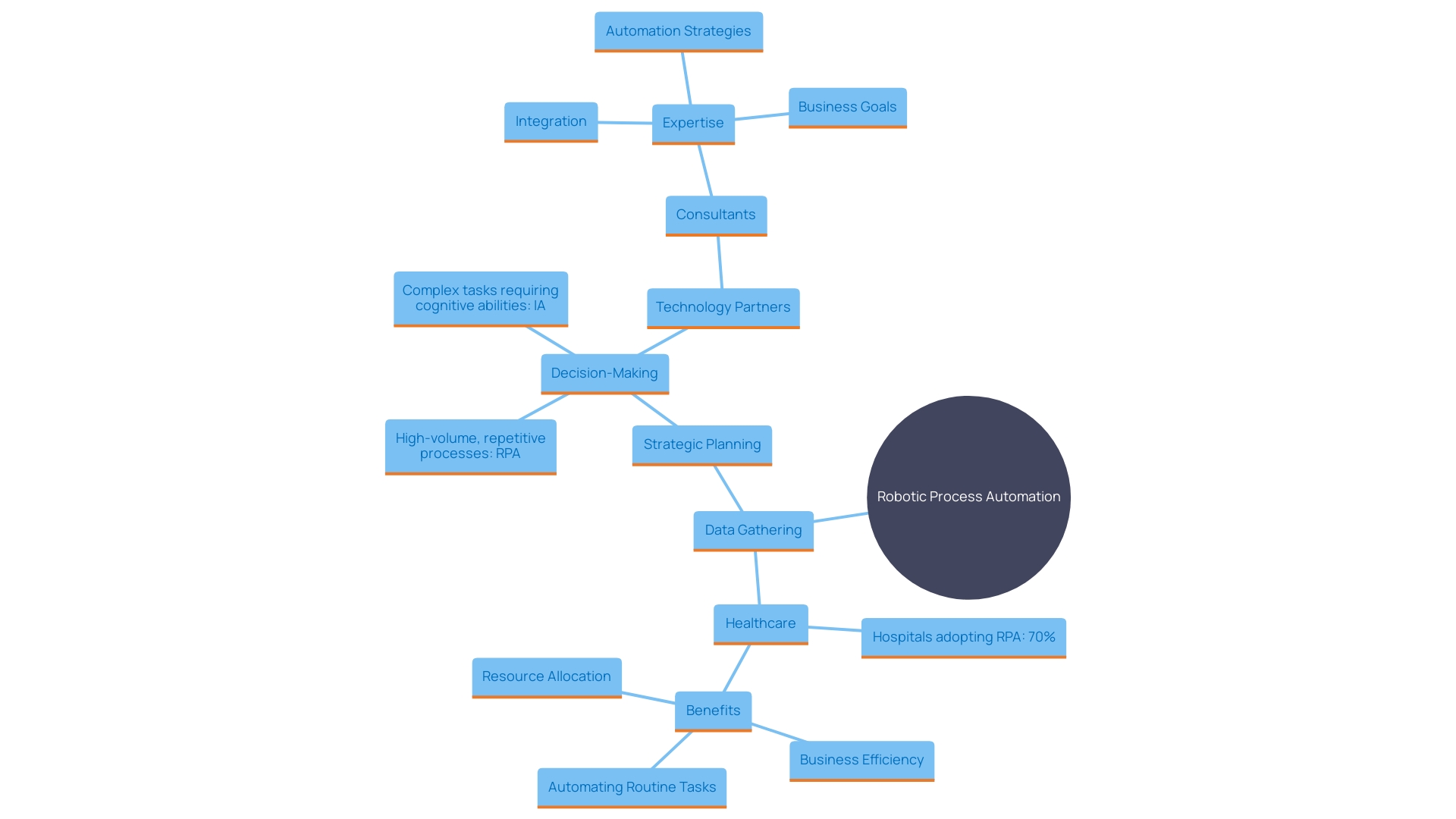
Strategic Resource Optimization
Robotic Process Automation (RPA) enables organizations to optimize their resources by reallocating human talent to more critical areas. This strategic resource allocation significantly enhances workforce engagement and drives innovation within the organization. For example, Delivery Hero, operating in over 70 countries with more than 53,000 staff members, faced the challenge of frequent account lockouts, which required substantial IT involvement to resolve. By implementing RPA, the company streamlined the recovery process, reducing the time personnel spent locked out of their accounts and allowing IT staff to focus on more impactful tasks. This not only enhanced operational efficiency but also raised staff morale and productivity. Similarly, Atlas Healthcare Partners experienced considerable improvements in financial performance and staff capacity by adopting automation, leading to enhanced team coordination and reduced role redundancies. These real-world examples underscore how RPA can effectively free up valuable human resources, fostering a more engaged and innovative workforce.
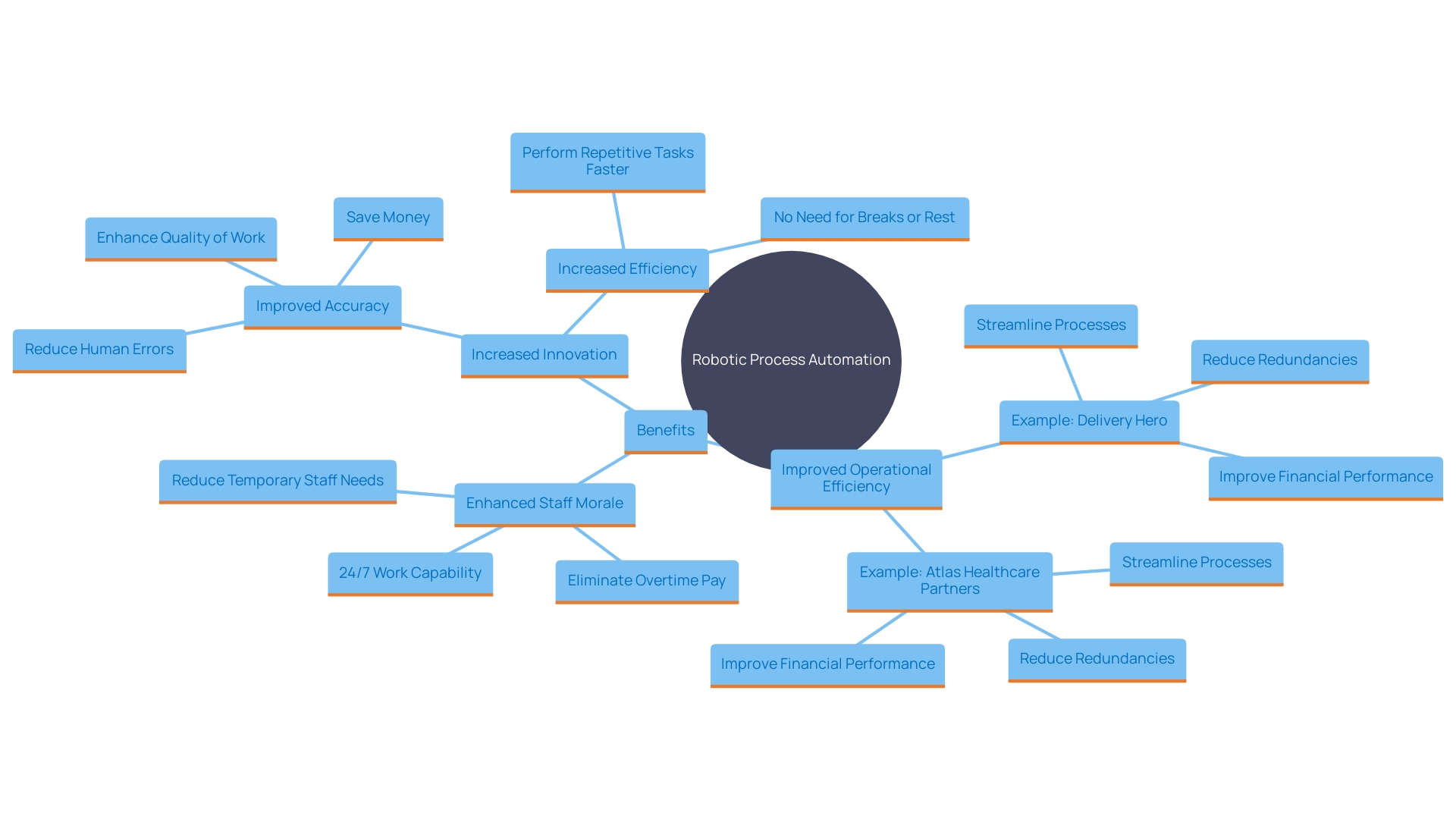
Enhanced IT Support and Integration
RPA can seamlessly integrate with existing IT systems, enhancing the support for various applications and ensuring that technology investments are fully leveraged. For instance, Delivery Hero, operating in over 70 countries with more than 53,000 staff members, faced a significant challenge with individuals being frequently locked out of their accounts. The IT service delivery team, led by Dennis Zahrt, implemented an RPA solution to automate the account recovery process. This reduced the average recovery time from 35 minutes to mere seconds, allowing employees to return to work promptly. Similarly, a partnership with Redox enabled Ambience to navigate the complexities of healthcare data integration, propelling product adoption rates and allowing the company to focus on innovation. These examples illustrate how RPA can improve system performance, streamline operations, and free up resources for more strategic activities. According to a report by Allied Market Research, the global Robot Operating Systems market is projected to reach $1.8 billion by 2032, reflecting a CAGR of 12.9% from 2023 to 2032. This growth underscores the increasing reliance on automation to drive efficiency and productivity in various industries.
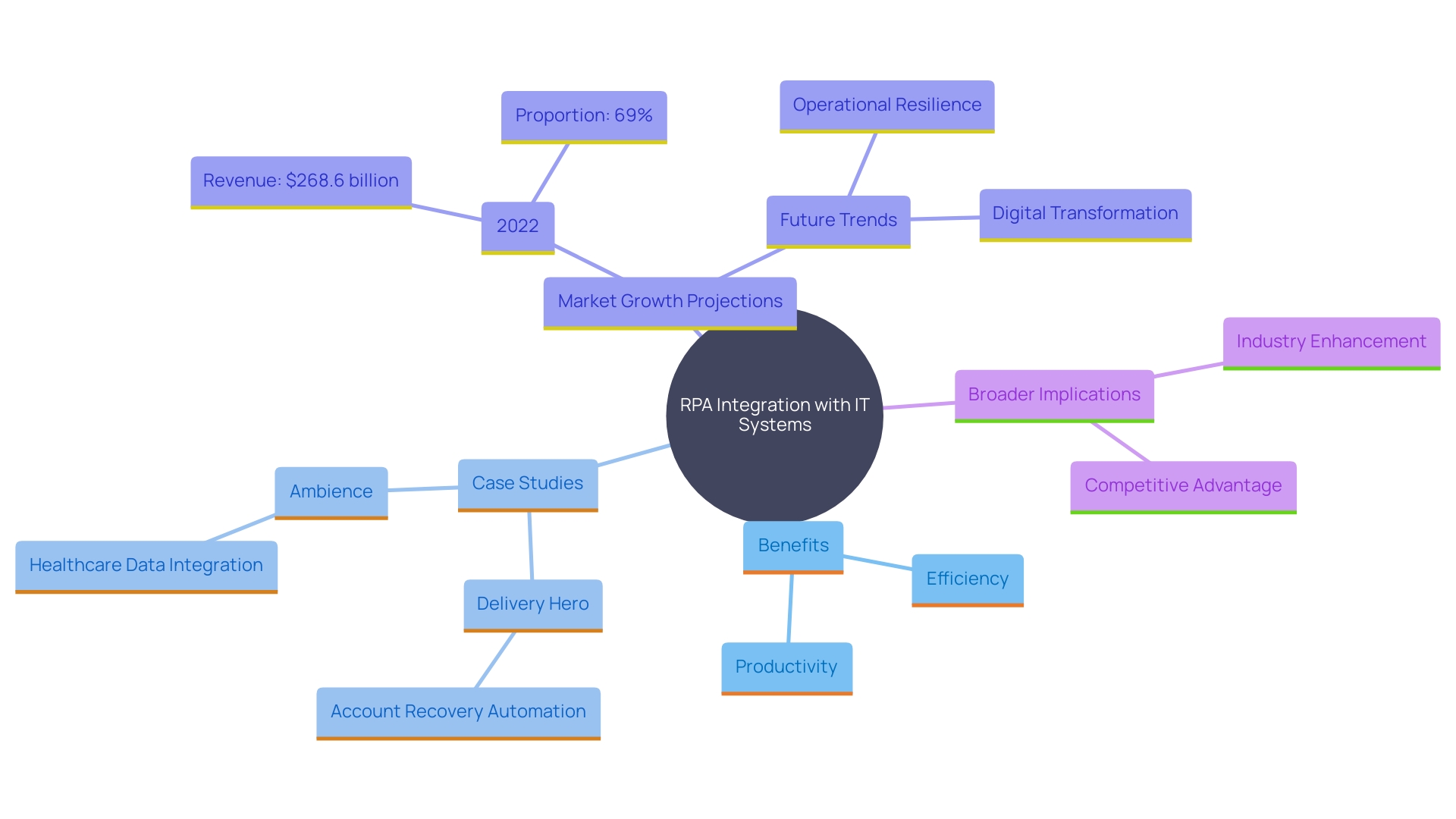
Conclusion
Robotic Process Automation (RPA) is essential for businesses aiming to boost productivity and streamline operations. By automating repetitive tasks, organizations can reallocate human resources to more strategic activities. Success stories from companies like St. James Winery and Delivery Hero demonstrate RPA’s effectiveness in enhancing operational efficiency, increasing margins, and addressing labor shortages.
Additionally, RPA minimizes human error and contributes to a healthier work environment, resulting in improved job satisfaction.
The financial advantages of RPA are significant, as it reduces operational costs and enhances resource allocation. With its ability to operate continuously, RPA decreases the reliance on overtime and temporary staff, allowing businesses to adapt quickly to market fluctuations. The increasing adoption of automation technologies is reflected in the projected growth of the Robot Operating Systems market.
Moreover, RPA improves decision-making by transforming data into actionable insights, optimizing resource utilization, and enhancing overall performance. By automating routine tasks, organizations can foster innovation and elevate employee engagement. As businesses integrate RPA, they position themselves to meet evolving demands, ensuring exceptional customer experiences and maintaining a competitive edge.
In conclusion, RPA offers transformative potential for organizations. By embracing this technology, businesses can achieve greater efficiency, accuracy, and strategic resource optimization. Implementing RPA is not merely a trend but a strategic imperative for sustainable growth and success in today’s dynamic business landscape.

